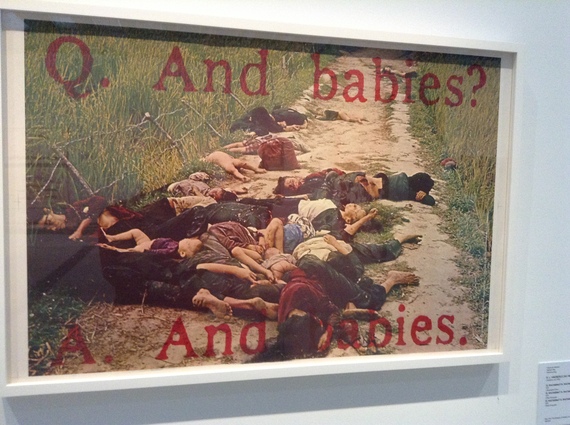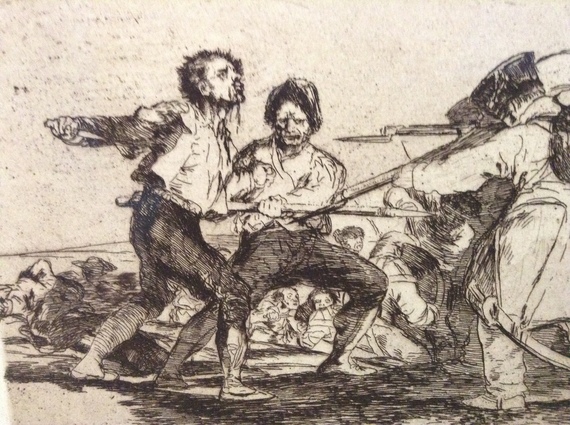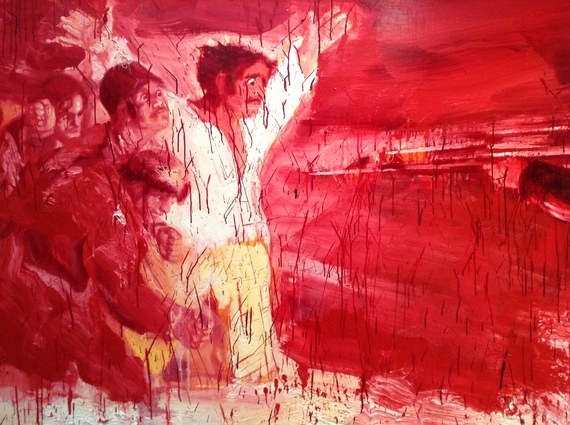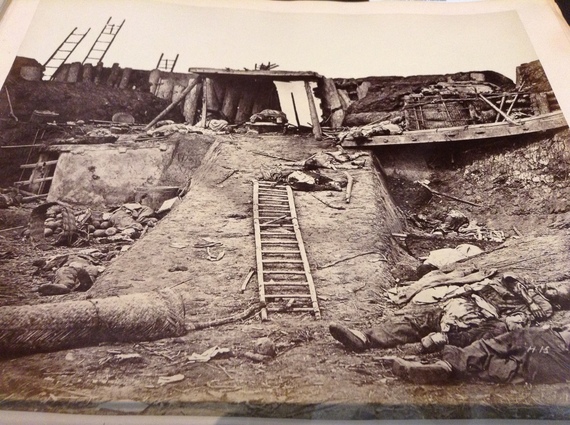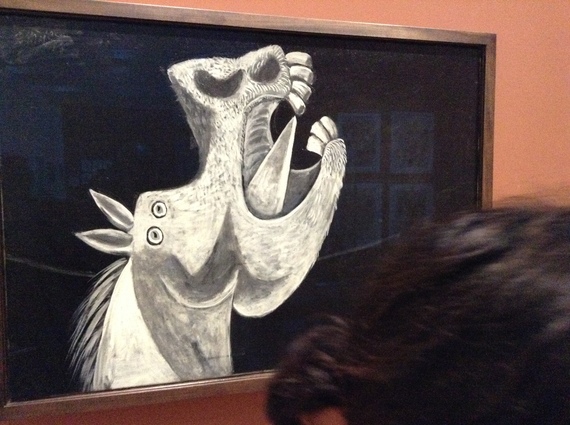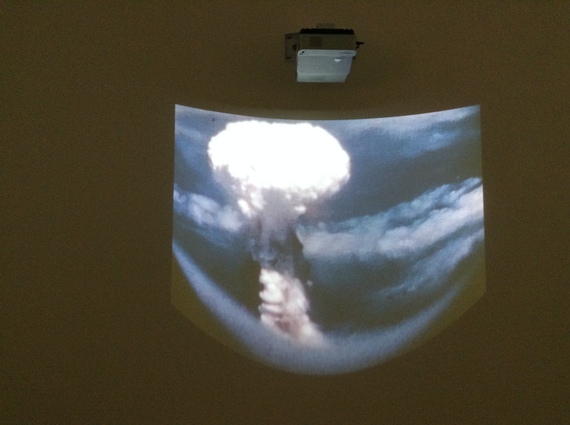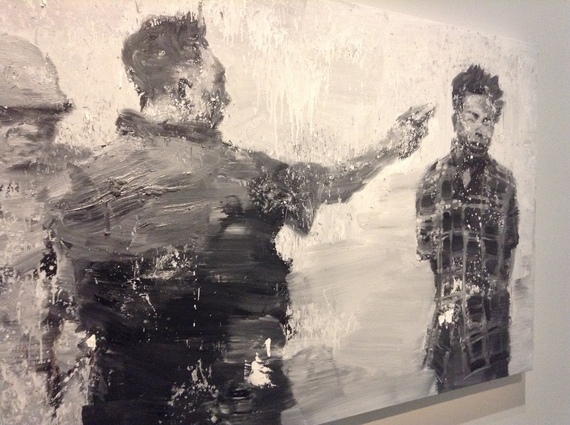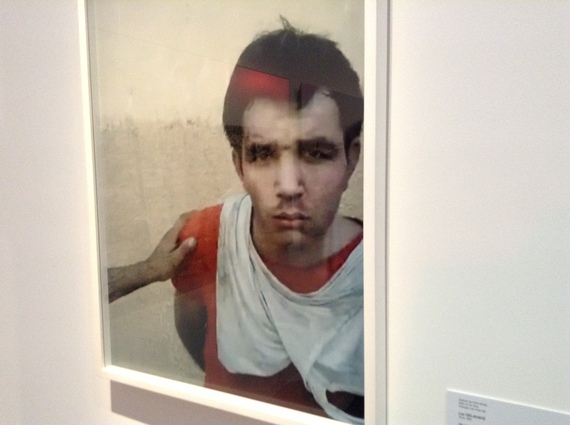War Art Peace: II
People have written recently that the standoff between Vladimir Putin and Barrack Obama over Ukraine has placed the world in greater danger of nuclear war than at any moment since Jack Kennedy went warhead to warhead with Nikita Khrushchev over the delivery of missiles to Cuba. For Syrians and Africans, the violence is ongoing, yielding the more displaced families than at anytime in the last half century.
Travelers who dare to look directly into the terrible beauty of collective death might want to take a one hour day trip this to Lens, the former coal mining town an hour north of Paris where the dazzling satellite of the Louvre Museum has collected 450 pieces of painting, sculpture, prints, film and photography under the title, "The Disasters of War: 1800-2014."
Two hundred artists -- from Goya's famous gravures of the Spanish War in 1808 to Pei Ming's revisiting of Goya almost 200 years later -- bore deeply into the primal statement articulated in 1819 by the trans-Europeanist Benjamin Constant after the unprecedented bloodbath launched across Europe by Napoleon: "even a successful war costs infallibly more than it is worth."
20 conflicts from the Napoleonic Wars that set the template for modern Europe through Vietnam and into Iraq and Syria track the psychosis, the duplicities, and the industrialization of mass death. Individuals become body parts. Inventive technology transforms itself into killing machines. Dreams and passions sprout hate and resentment. Male muscle, women's breasts and children's eyes dissolve into sanitary, coded algorithms. Civilians disappear into collateral terror. News gives birth to propaganda.
The Louvre being French, the show begins with the heroic painting by Jean-Louis David of Napoleon on horseback leading his men triumphantly across the Alps. It is the only heroic piece of propaganda on display. Immediately we turn to Goya's ghastly etchings of slaughter -- which return again and again in ever-shifting visual translations by successive artists across the two centuries. Pei Ming returns later with his own take on one of the most ghastly images of the Vietnam War.
But first we visit the first struggle over the fate of Crimea -- waged for much the same stakes as the current NATO Russian standoff over control of access to the Black Sea and the minerals of Central Asia. But it wouldn't be until 1860 that military censors permitted photographers to show the flesh and bone of death with Felice Beato's images of Britain's Opium Wars in China.
These dead, of course, were Chinese; the dead faces of Europeans would have to wait for The Great War of 1914-1918, whose one hundredth anniversary is being marked not only at Louvre Lens but all across Europe. World War I claimed more than 16 million lives -- just among soldiers It is a war largely forgotten by Americans now, but it marked a watershed, a "new kind of war" controlled by industrial killing machines whose mechanical great grandchildren today we call smart bombs and aerial drones.
By the Spanish Civil War we find Picasso creating a new way of witnessing terror.
And that would soon be followed by the post-modern mega death that millions of today's Americans and Europeans do recall, a war that not only pitted soldier against solder but the war that ended when the earth's only superpower unleashed the mysteries of physics and fission over Nagasaki (recorded by the U.S. military) against the last Japanese holdout.
The beginning of the end of the idea of the Cold War came back to earth as America the Good came face to face with what our soldiers dismissed as "the little gooks" in the jungle who in less than a decade brought the super power to its knees with the loss of 58,000 thousand Yanks and a million Vietnamese, many of them blown away in famous images like Eddie Adam's capture of the death of a Viet Cong prisoner re-rendered by Pei Ming.
If Vietnam marked one watershed in the art imagery of war, unleashing a set of images that would forever erase the boundaries between document and art, the dark dance continues, caught in this photo of the last moments of a young Syrian man's life made last year by Luc Delahaye and which in its own way takes us back to Goya's documentation of the Napoleonic campaigns.
"The Disasters of War" is an original, unprecedented exhibition. Partisans of one camp or another in each of the conflicts will likely leave the museum enraged -- as was one partisan at a press visit who argued for a different set of historical interpretations than what he took to be the "pacifist" line of the exhibit. No, "the mission was not pacifist" answered curator Lawrence Bertrand Dorléac who explained that she had spent two years sifting through thousands of images from the Louvre and elsewhere -- and 30 years in meditation about the effects of war. Her object, she said, was not to present a history of war but instead to create a history of the meditations that these artists inspire in our reading of war from Napoleon's defeat into our present time.

